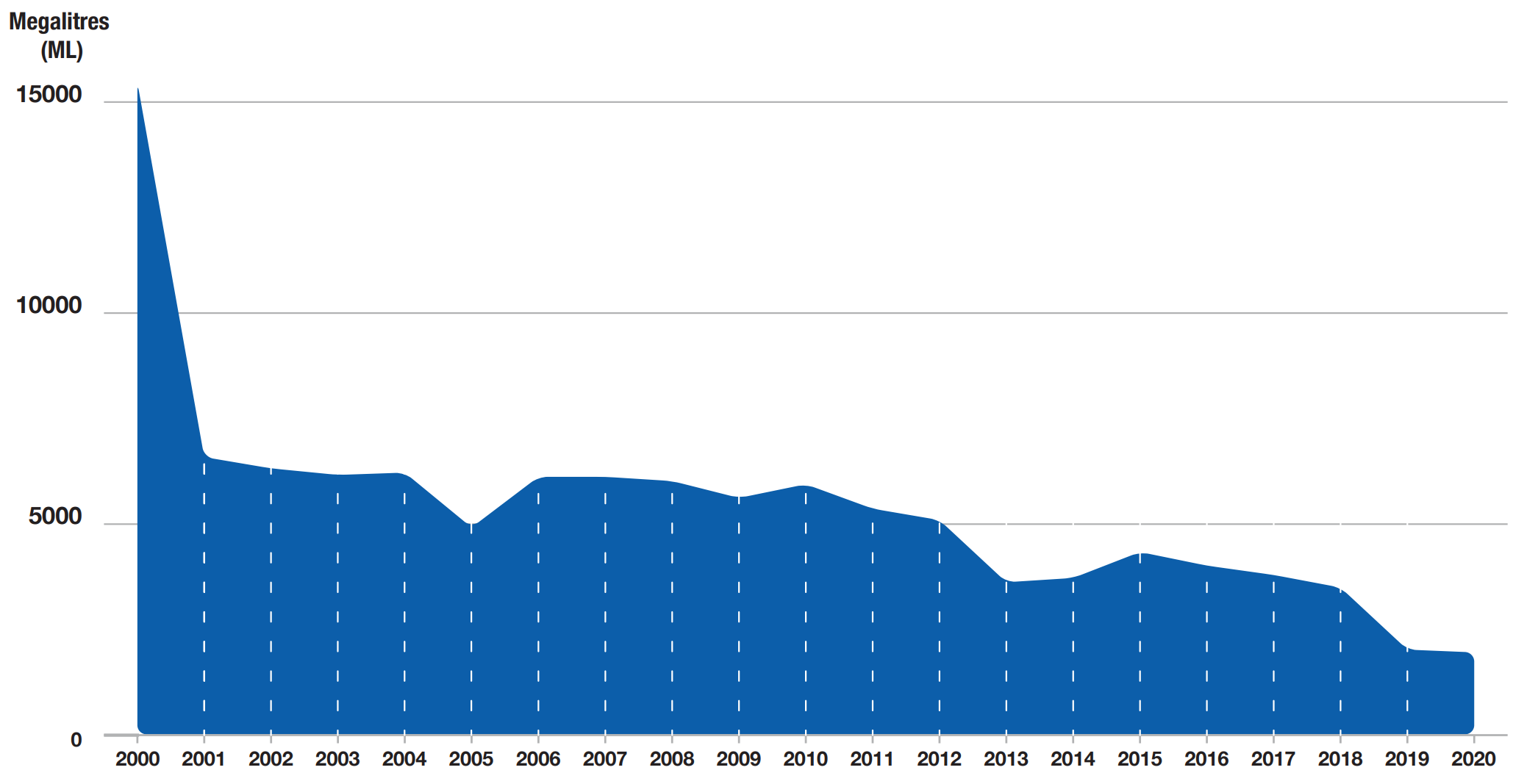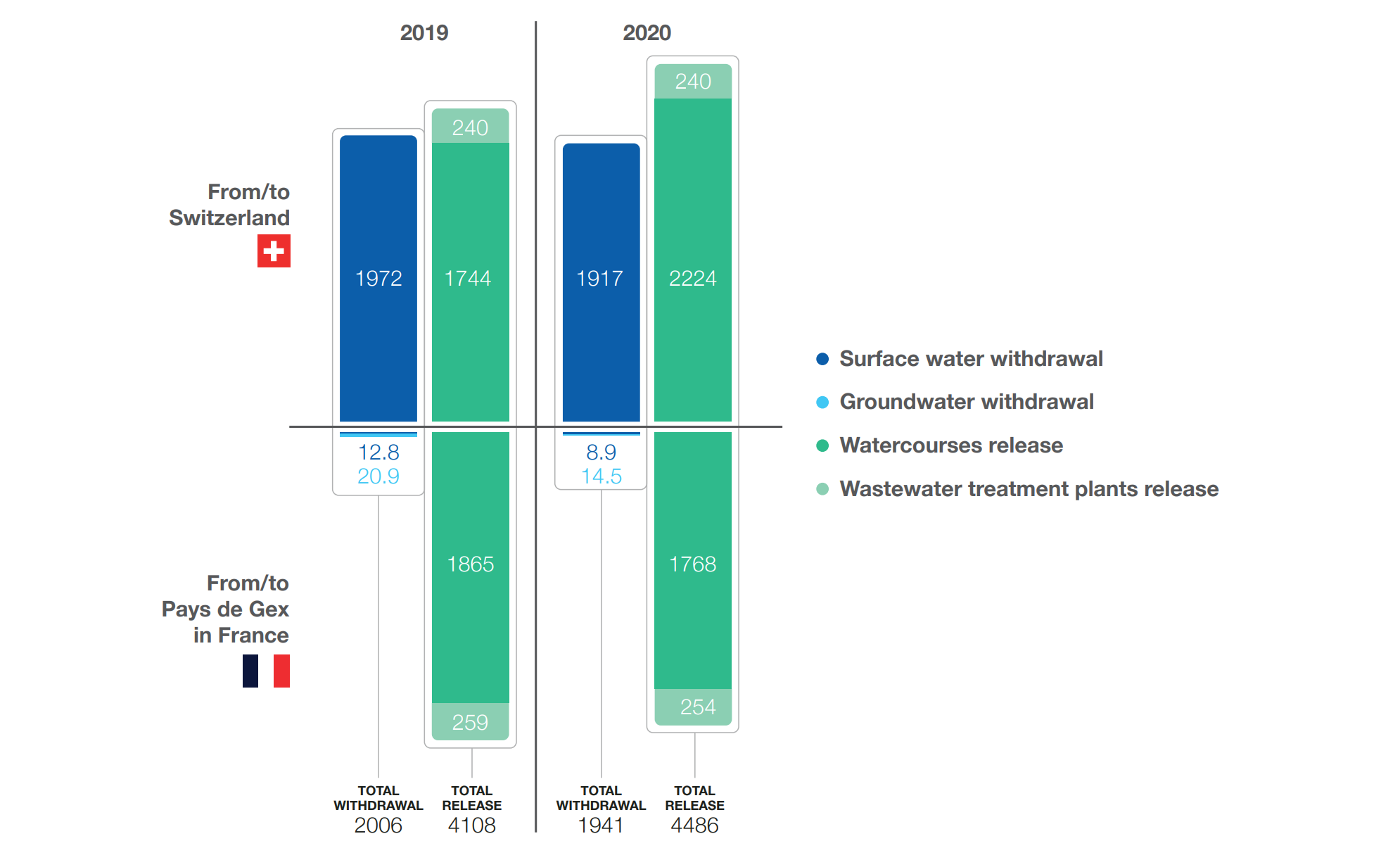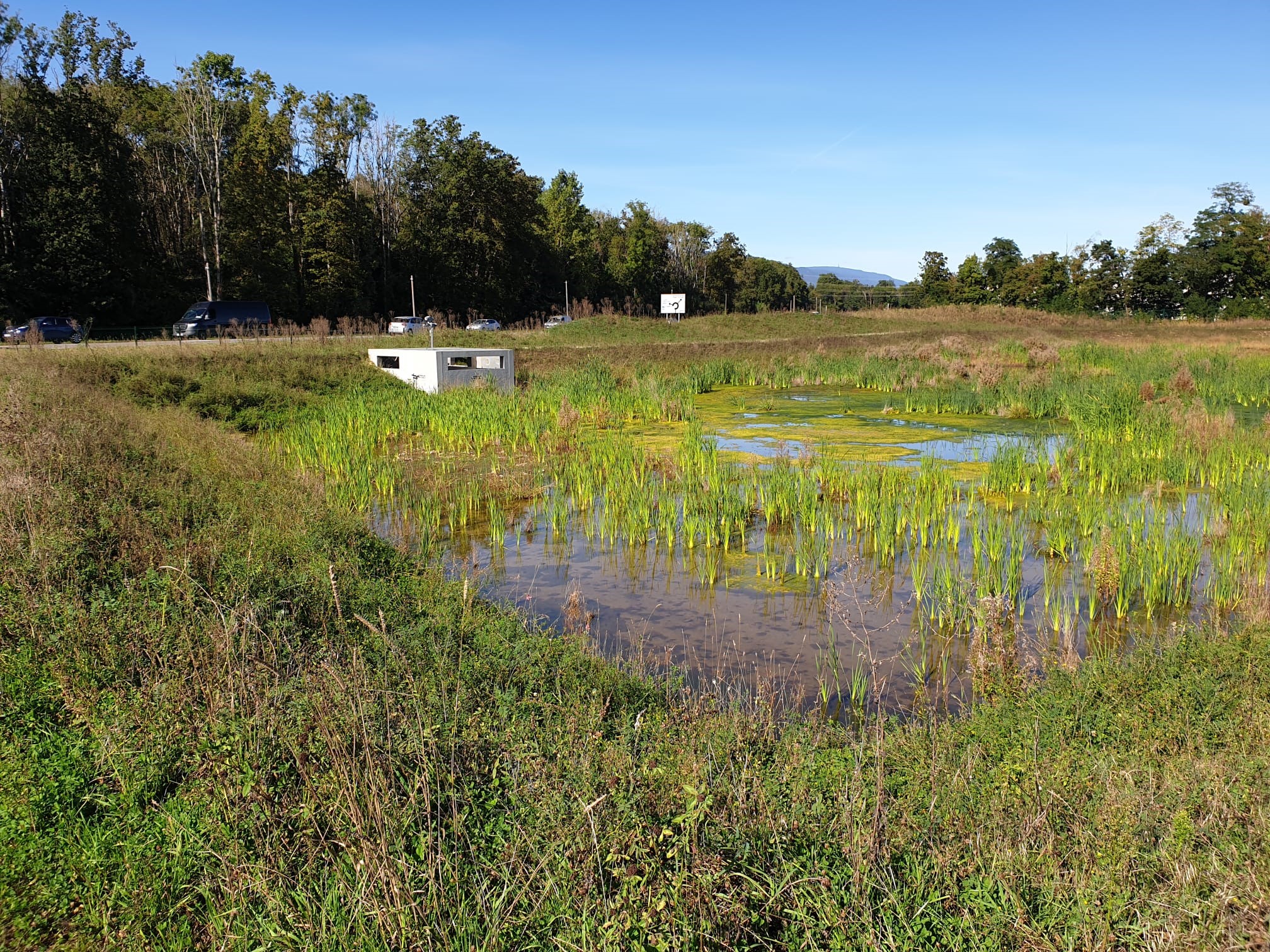Water is essential for the cooling systems of CERN’s scientific facilities, and responsible water management is of utmost importance to the Laboratory.
Water withdrawal and consumption
CERN’s industrial activities account for around 75% of the Organization’s water consumption during accelerator shutdown years. The remaining 25% is used for sanitation purposes.
In 2019 and 2020, CERN consumed 2006 and 1941 megalitres (ML) of water respectively. Water is mostly used to supply the various cooling systems and for sanitation purposes. With the Large Hadron Collider (LHC) in its second long shutdown (LS2), about 47% less water was needed than in operational years. As of 2021 and with the restart of physics, water consumption for cooling research facilities will gradually increase. CERN decreased its water consumption radically from 15 000 ML in 2000 to 3477 ML in 2018, principally by changing its cooling tower water circuits from open circuits to semi-open or closed ones.
All water supplied to CERN is of drinking quality. It is either used as is, or demineralised. The Services Industriels de Genève supply most of CERN’s water, which comes from Lake Geneva. About 1% comes from the Pays de Gex in France, which is a water stressed area. It consists mainly of groundwater and is provided by the Régie des Eaux Gessiennes.

Water releases
CERN’s cooling towers evaporate a fraction of the water used for cooling the accelerators. Part of it is released as effluent water. The latter contains residuals of treatments used to prevent scaling, corrosion and bacteria, including Legionella. As some receiving watercourses are small and sensitive to the quality and quantity of effluents, CERN is implementing a programme aimed at improving the quality of its effluents. This is the case for the Nant d’Avril and the Lion, a tributary of the Allondon, as well as the Allondon itself, which receives around 80% of all water released into watercourses. The improvement programme is due to be completed during the next long shutdown. Sanitation water is released to local public wastewater treatment plants.
The Laboratory also releases infiltration water, which is pumped from underground tunnel areas, along with run-off rainwater, into neighbouring watercourses. This explains why water releases are higher than the water withdrawal figures provided by the suppliers. These quantities vary from year to year and according to the different sites around the LHC ring.

Water management
CERN is committed to keeping the increase in its water consumption to below 5% up to the end of 2024 (baseline year: 2018), despite a growing demand for the water cooling of upgraded facilities. Longer-term objectives will be set in future reports. The Organization is also committed to optimising qualitative and quantitative aspects of its water releases and to full compliance with the technical requirements laid down in the Host State regulations. The Organization has a long-term programme to further reduce the concentration of chemicals in the effluents it releases to watercourses.
CERN regularly samples the neighbouring watercourses to evaluate its impact and reports on its monitoring programme to the Host State authorities on a quarterly basis. Intervention plans exist as part of CERN’s emergency preparedness in the event of an incident. The Laboratory has procedures to mitigate the consequences and to alert the relevant Host State authorities and emergency services.
Regular exchanges with the local Host State authorities on water protection issues are held in the framework of the tripartite committee for the environment. This committee bases its discussions and recommendations on the results of the monitoring programme, which was recently reinforced. No event detrimental to the environment that would have led to a fine or non-monetary sanction occurred during the period covered by this report (see Environmental compliance).
During the period covered by this report, the Laboratory created a new station for demineralised water on the Meyrin site. This improves evaporation, limits the consumption and reduces the need for chemicals in cooling towers. Additionally, the piping was replaced to distribute water more efficiently.
 Revitalisation of the Nant d’Avril
Revitalisation of the Nant d’Avril
In 2020, CERN co-signed a charter initiated by WWF Geneva for the revitalisation of the Nant d’Avril, the second largest tributary of the Rhône in the Geneva basin. The project will run until 2033 and brings together the key stakeholders of the Nant d’Avril basin. It aims to improve water quality and biodiversity throughout the waterway. CERN carried out detailed studies to integrate retention basins on the Meyrin site for effluents reaching the Nant d’Avril.
CERN has set objectives regarding the quality of effluents released to the Nant d’Avril in the context of the regional plan on the evacuation of water (Plan Régional d’Evacuation des Eaux, PREE), developed by the Canton of Geneva. LS2 provided the opportunity to make significant progress on these objectives. In particular, the Laboratory upgraded its main cooling towers on the Meyrin site. The aim was to replace old systems and increase capacity, as well as limit water consumption and the impact of water releases. The new cooling towers are made of stainless steel to avoid copper and other potentially problematic materials with regard to Legionella. Upgrades of the remaining cooling towers will be carried out before the end of the next long shutdown.
In focus
Michael Poehler, project manager for CERN’s new retention basin.

— What has CERN done to safeguard the local watercourse, the Lion?
MP: Following discussions between CERN and local French and Swiss authorities, in the framework of the tripartite committee for the environment, a hydraulic study of the operating conditions of the Laboratory’s rainwater networks and the related surface run-offs from the Prévessin site was carried out. This study highlighted the need for two retention basins to prevent potential accidental pollution.
In 2020, CERN built a retention basin at point BA2 of the SPS accelerator. The basin has a volume of approximately 6000 m3 and handles about 60% of the rainwater from the Prévessin and BA2 sites. The basin will ensure a lower temperature of the water released into the Lion watercourse, provide decantation of water releases containing suspended solids and ensure the retention of any accidental releases of potential pollutants.
Learn more
Questions regarding this report may be addressed to environment.report@cern.ch.
